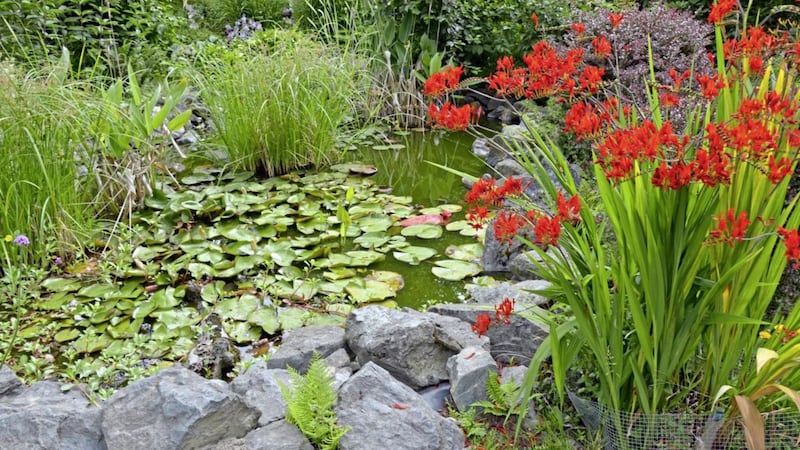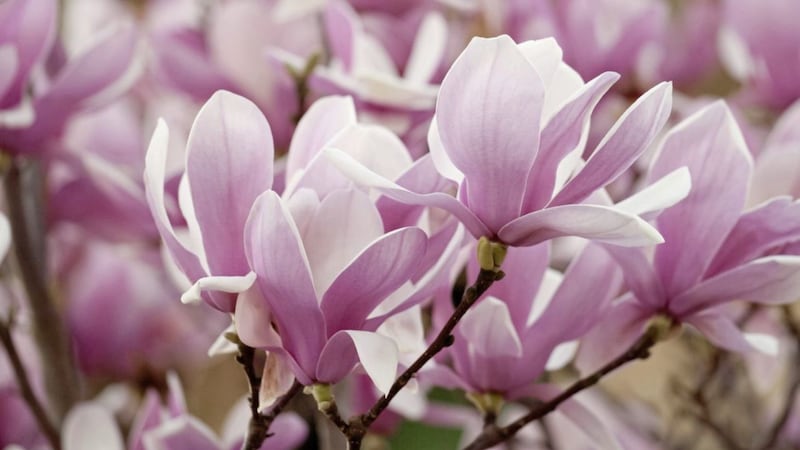I CAN take or leave the RHS Chelsea Flower Show. Clearly, pulling off this annual gardening extravaganza relies on many very talented designers and accomplished plantsmen and women. However, it is also dependent on millions of pounds of corporate sponsorship and has a carbon footprint of Godzilla proportions, while fawningly celebrating its royal patronage.
Were I to make the late May pilgrimage to west London, I imagine the RP accents and car parks rammed with Range Rovers would quickly have me pining for my own garden back home.
What I did notice when I caught glimpses of the near saturation television coverage during the week was the amount of water being utilised in the various show gardens. Nothing changes the dynamic of a garden, both from an aesthetic and ecological perspective, quite like water.
This year at Chelsea, flowing water seems to be the thing though this is impractical and costly for most domestic settings – unless you’re blessed and have a stream running through your garden.
Instead I’d advocate a pond, a wildlife pond specifically, the bigger the better – though anything from a half barrel will work.
Not only will an expanse of water draw light into your garden but it will also bring wildlife in the form of everything from pond skaters and sticklebacks to frogs and visiting birds.
It will also enhance the ecology of your space, encouraging greater biodiversity, which in turn reduces the threat from pests.
From the minute your pond is filled creatures will arrive, though this process can be speeded up by adding a bucket of water or two from an established pond.
When planning your pond, choose a site sheltered from strong winds and where the ground is level. Ideally, you want to locate it where it'll get sun for at least two-thirds of the day and away from overhanging trees.
Preferably, it should have an area of 10 square metres or more, with gently sloping sides, ledges and beach areas, and be as deep as possible – at least two-to-three feet – to ensure the water never freezes completely.
Pond liners can be expensive but you get what you pay for. You'll first need to line the excavated hole with soft materials like old rubber underlay, carpet or wet cardboard before adding a thin layer of sand to protect the liner from sharp stones.
To keep the water both healthy and attractive, you'll need a mix of floating plants like amphibious bistort and frogbit and submerged oxygenators such as water milfoil and water starwort.
For around the edges, flag iris, ferns, hostas and astilbes will all be content with dampish roots but generally not waterlogging.
Plants to avoid include a number of invasive non-natives such as New Zealand pigmy weed, Parrot's feather and floating pennywort.
Natives like white and yellow water lilies, bulrush and common reed are only suitable for much larger ponds.
Duckweed can be a menace if allowed to build up, so it may need cleared from the water's surface with a net from time to time.
A pebble beach area will allow birds and amphibians easy access to the water, while also making your pond look more natural. If space isn't restricted consider creating an adjacent bog garden that can be lined with offcuts from your main liner.
While there'll be a temptation to add ornamental fish, remember that they'll eat tadpoles and other insect larvae, and can make the water murky. It's also best not to introduce amphibians artificially – if the pond is suitable, they'll find it.








